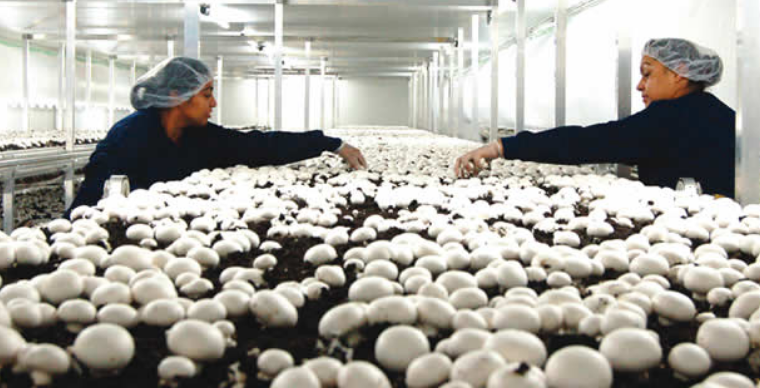
Mushroom farming has become an alternative for vegetable farmers as it offers them new business opportunities. Mushroom farming is thriving now in Nigeria. Mushroom cultivation can yield quick money if the farmer understands the practical details of the modern techniques and type of species that are in high demand in Nigeria, Europe, the United States of America and other developed countries.
However, the rising consciousness of the elite to choose healthy diets has made mushrooms a popular feature of expensive meals in hotels, bars, restaurants, shopping malls and top class eateries.
Mushrooms are popping up in odd places all over the supermarket, from coffee and soups to snack bars. That is because the humble fungus is nutritionally impressive. Add it to any dish and you will impart loads of savory, meaty flavour for very few calories.
Get all the training you need to succeed as a mushroom farmer and marketer for your farm produce at Jovana Farms!
Six white mushrooms clock in at a mere 28 calories. Mushrooms also deliver nutrients that many people lack, like potassium, which keeps blood pressure in check: a cup of white mushrooms has nearly 10 per cent of your daily-recommended target (4,700mg), a goal only one per cent of our people meet.
Mushrooms are brimming with phytochemicals, antioxidants and a fibre called beta-glucan, all of which have anti-inflammatory properties. That means they can protect you from a number of diseases, says Dr Lawrence Cheskin, Director of the Johns Hopkins Weight Management Center.
A 2017 study found fungi to be the best source of two disease-fighting antioxidants, ergothioneine and glutathione. Low levels of the latter have been linked with higher risks of heart disease, diabetes and cancer.
The nutritional merits of some of the latest mushroom-enhanced products-like a chocolate drink spiked with mushroom extract—are less clear. However, mushrooms are increasingly being used to replace red meat. Nowadays some restaurant and fast food chain are introducing fresh, dried and cooked mushrooms, resulting in a diet with less saturated fat and calories.
Another recent launch: mushroom jerky made with shiitake stems, which has less protein but more fibre than meat versions.
When making your own mushroom creations, shop for dry packages at the supermarket that are free of condensation. Store the mushrooms in a refrigerator in a sealed paper bag, and prepare them by wiping them down immediately before cooking.
Mushroom types vary by their antioxidant concentrations (meaty porcinis, for example, are one of the most antioxidant-rich fungi). But you can enhance the nutritional prowess of nearly any variety just by putting a pack of mushrooms in the sun. Mushrooms use sunlight to make vitamin D, yet most are grown in the dark. A cup of white mushrooms contains little vitamin D, but one study found that putting them in natural sunlight for 30 minutes grew the Vitamin D content between 150 IU and 600 IU per cup, or 25 per cent to 100 per cent of your recommended daily dose.
If you chop them up first, you will increase sun contact and maximise vitamin D production. You also can buy vitamin D-enhanced mushrooms at certain grocery stores.
If fungi turn you (or other meticulous eaters) off, but you still want to pack in extra vitamin D and antioxidants, grind air-dried and sun-bathed mushrooms into a powder. Mushroom nutrients are heat-stable, so they wwould degrade when cooked, notes Robert Beelman of the Center for Plant and Mushroom Foods for Health at Pennsylvania State University. Toss the powder into foods such as rice, beans, soup and bread flour for a nutrient boost with a disguised taste.
























